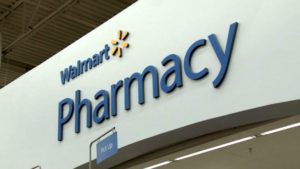- Boehringer Ingelheim inks outcomes-based contract with pharmacy benefit manager for diabetes drug (drugdeliverybusiness.com)
Boehringer Ingelheim has inked an outcomes-based contract with pharmacy benefit manager Prime Therapeutics for its oral Type II diabetes drug, Jardiance...The medication is designed to cut the risk of cardiovascular death in adult patients with Type II diabetes and established heart disease...As part of Prime’s CareCentered Contracting program, the outcomes-based deal will focus on the total cost of care for Blue Cross and Blue Shield members taking Jardiance compared to the total cost of care for patients using other diabetes drugs...this outcomes-based contract...represents an important step towards improving outcomes by lowering the total cost of care of people with diabetes...Diabetes and cardiovascular disease put a significant financial burden on the healthcare system, and we are confident Jardiance may improve outcomes by reducing the overall healthcare costs of people with Type II diabetes and cardiovascular disease...
- Replacing daily pills with a weekly regimen could help patients adhere to therapy (ptcommunity.com)
Replacing daily pills with a weekly regimen could help patients stick to their dosing schedule... Researchers at Massachusetts Institute of Technology and Brigham and Women’s Hospital have developed a capsule that can deliver a week’s worth of human immunodeficiency virus drugs in a single dose. This advance could make it much easier for patients to adhere to the strict schedule of dosing required for the drug cocktails used to fight the virus...The new capsule is designed so that patients can take it just once a week, and the drug will release gradually throughout the week. This type of delivery system could not only improve patients’ adherence to their treatment schedule but also be used by people at risk of HIV exposure to help prevent them from becoming infected...The MIT/BWH team is also working on adapting this technology to other diseases that could benefit from weekly drug dosing. Because of the way that the researchers designed the polymer arms of the capsule, it is fairly easy to swap different drugs in and out, they say. They are also working on capsules that could stay in the body for much longer periods of time...
- Bumper crop of new drugs fails to lift big pharma R&D returns (reuters.com)
It is shaping up to be a bumper year for drug approvals, with U.S. officials clearing twice as many novel medicines as in 2016, yet returns on research investment at leading pharmaceutical companies are down...In fact, projected returns at 12 of the world’s top drugmakers have fallen to an eight-year low of only 3.2 percent...The disconnect reflects the rising cost of developing new drugs, meager peak sales expectations for individual products and the fact that younger biotechnology companies are accounting for a growing proportion of new products...So far this year, the Food and Drug Administration...has approved 41 novel drugs compared with 22 for the whole of 2016...It’s been a great year for approvals in 2017...But for the giants of the pharma world...things are not so rosy. This decade has seen shrinking profitability in their research labs, with the average internal rate of return down sharply from 10.1 percent in 2010 to 3.2 percent this year...A separate group of four large biotech companies are projected to enjoy an IRR nearly four times higher at 11.9 percent. The calculations are based on long-term sales forecasts...The biotech companies are seeing more success...biotechs typically had a leaner cost structure...
- Lab-Grown Mini Organs Could Speed Up Drug Discovery (forbes.com)
The thought of lab-grown organs conjures up Frankenstein-like imagery. The reality however, is somewhat less visually dramatic, with the term ‘organoids’ used to describe tiny 3D structures of human tissue, a millimeter or so in diameter...these tiny lumps of cells are creating a lot of excitement in the world of medical research...Cells in dishes and animal models have been used for preclinical testing of drugs for decades. Success in these experiments is a key hurdle for any new medicine to overcome before being given the green light for all-important human clinical trials...Organoids are most commonly made either from a small sample of tissue needled out of a person or from stem cells cultured in a cocktail of nutrients intent on pushing them towards becoming a particular tissue type. So far, organoids have been made resembling several tissues including lung, liver, brain, kidney and intestine...as a relatively new innovation they are being used to investigate dozens of conditions from infectious diseases to cancer.... A study published last year in Science Translational Medicine by scientists at the University Medical Centre, Utrecht generated organoids formed from the rectal tissue of 71 people with cystic fibrosis and exposed them to experimental drugs. By observing changes in the organoids, the scientists accurately predicted which patients would respond to the therapies in just one week at a cost of around $1200 per patient. The results were so convincing that a positive organoid test is now considered sufficient evidence for insurance companies to fund the new therapies in the Netherlands...
- Wal-Mart launches program to safely dispose of unused opioids (reuters.com)
Wal-Mart Stores Inc...will provide customers filling prescriptions for opioids with a packet of powder that will help them dispose of leftover medication in order to help curb misuse and abuse...The company said patients filling any new class II opioid prescriptions at its pharmacies will receive a free packet of the product - called DisposeRx - when filling a new prescription. Patients with chronic Class II opioid prescriptions will be offered a free packet every six months...In order to safely dispose of opioids, patients would add warm water and the DisposeRx powder to their pill bottle, which then forms a biodegradable gel around the pills.
- 2017 was a big year for FDA digital health regulations (healthcareitnews.com)
With a new administrator at the helm, the U.S. Food and Drug Administration took steps toward regulating decision support, software-as-a-medical-device, mobile tech in clinical trials and more...the FDA had a full plate in 2017 as it sought to revise its regulatory processes for the shifting healthcare landscape...the new guard already had announced and implemented a firm-focused pre-certification program, released new guidances addressing provisions of 2016's 21st Century Cures Act, and outlined a handful of other ongoing initiatives that are sure to impact the digital health industry. Here's a rundown of the agency's actions and announcements during 2017.
- New leadership, new approaches
...a plan that included clear language on which devices the agency would look to regulate, an app regulation strategy involving postmarket data collection, and other idea designed to streamline the approval process...FDA opened up applications for a pilot of a firm-focused digital health pre-certification program...nine companies selected to participate: Apple, Samsung, Verily, Pear Therapeutics, Tidepool, Phosphorus, Fitbit, Roche, and Johnson & Johnson...draft of the long-awaited and somewhat controversial guidance on clinical decision support, which laid out the forms of clinical decision support that would or wouldn't be regulated based on the degree of human involvement (as opposed to risk)...draft guidance describing the FDA's new Breakthrough Devices Program...would supersede the Expedited Access Pathway and aims to push novel technologies presenting a significant improvement over status quo through the clearance process more quickly.
- FDA shifts toward digital, patient feedback
...the Clinical Trials Transformation Initiative – a public-private partnership of pharma companies, academics, and regulators including the FDA – released new endpoint recommendations for the use of mobile technologies in clinical trials... The guidelines, meant to be the first in a series of such documents, included suggestions for study designers when selecting novel endpoints, practical approaches when developing these endpoints...
- New leadership, new approaches
- Artificial Intelligence: will it change the way drugs are discovered? (pharmaceutical-journal.com)
The pharmaceutical industry is beginning to invest in artificial intelligence (AI), with many large pharmaceutical companies partnering with AI start-ups in 2017 in order to develop better diagnostics or biomarkers, to identify drug targets and to design new drugs. But when will the first AI-designed drugs reach the market and will AI permanently change the pharmaceutical industry and the way drugs are discovered?...Harnessing the power of modern supercomputers and machine learning will enable us to develop medicines more quickly, and at a reduced cost...The technology has just taken off recently and primarily that’s due to the advances in deep learning that have demonstrated superhuman accuracy in image recognition and autonomous driving...We are starting to see AI can outperform humans when analysing very complicated datasets for high content, phenotypic drug discovery...The [AI] technology is allowing us to explore a much bigger design space and discover these rare molecules that have properties beyond what we would get if we just ran a traditional high throughput screen...We can benefit from computer modelling but we still need to conduct real experiments and there will still be an element of serendipity...
- Flu-pocalypse? Why scientists are scrambling to make a ‘universal influenza vaccine’ (foxbusiness.com)
Flu season is already shaping up to be one of the worst seasons in over a decade, claiming the lives of nearly 20 children across the U.S. and 7% of senior deaths over the last month, according to the Centers for Disease Control and Prevention...One of the reasons for the massive outbreak this year...is that it involves the dreaded H3N2, a strain of the influenza that isn’t “very well-matched” with the current vaccines that are being distributed across the U.S...In the making of the vaccine as it was being grown in eggs...it got mutilated a bit, so it drifted away from a really, really good match...even in a very good year the influenza vaccine is only about 60% effective. And, the projection of how effective it is going to be against the H3N2 this year is about 30%...Sanofi, who is one of the largest makers of flu vaccines...has been “continuously focused on improving influenza vaccines” over the years...This is evident in our introduction of Fluzone High-Dose Influenza vaccine, the first and only flu vaccine shown to have superior efficacy against influenza compared to Fluzone vaccine in adults 65 and older, and our recent acquisition of Protein Sciences, which has developed a recombinant DNA technology system for the production of recombinant proteins. The company additionally has ongoing efforts to develop a broadly protective influenza vaccine that would be effective despite natural mutation of flu strains over time...
- The next big thing in pharmacy supply chain: Blockchain (healthcareitnews.com)
With $200 billion lost to counterfeit drugs annually and patient safety issues, a chain-of-custody log that blockchain could enable holds promise...Blockchain has the potential to transform healthcare in general and the pharmacy supply chain in particular...The distributed ledger technology could offer legislative, logistical and patient safety benefits for pharmaceutical supply chain management. From a regulatory perspective in the United States, blockchain technological and structural capabilities, in fact, extraordinarily map to the key requirements of the Drug Supply Chain Security Act...The DSCSA outlines a 10-year timeframe that will require elements including medication track-and-trace, product verification and notification of stakeholders about illegitimate drugs. A shared ledger of information to enable each of these steps is a foundational aspect of blockchain technology...“Logistically, blockchain aligns well with federal efforts like the National Strategy for Global Chain Security,”...“One of the most promising benefits of blockchain from a patient safety perspective is to help stem the tide of the so-called SSFFC medicines – substandard, spurious, falsely labeled, falsified and counterfeit – that continue to plague the pharmaceutical supply chain.”
- Rx precision medicine tool latest to be integrated into clinical workflow (healthcareitnews.com)
Translational Software recently became the latest in a growing number of health IT vendors creating systems to advance precision medicine with its debut of its PGx pediatric platform. Another precision medicine player stepped into the market...with a product designed to be integrated smack dab in the middle of a physician’s clinical workflow. 2bPrecise, a cloud-based precision medicine platform vendor and an Allscripts company, launched a pharmacogenomics (PGx) system to bring crucial data to the clinical workflow...2bPrecise Pgx...makes pharmacogenetic information accessible so physicians can make better informed treatment decisions based on a patient’s unique genetic makeup...The 2bPrecise PGx system plugs into an EHR’s native workflow and can integrate content from Translational Software (a genomic data-based clinical decision support system) and other knowledge sources to enable precision medicine-based decision making at the point of care. 2bPrecise’s PGx system is part of its larger precision medicine platform, built to capture and store genomic data from a range of sources, enabling the harmonization of clinical knowledge and genomic research to extract patient-specific insights.










